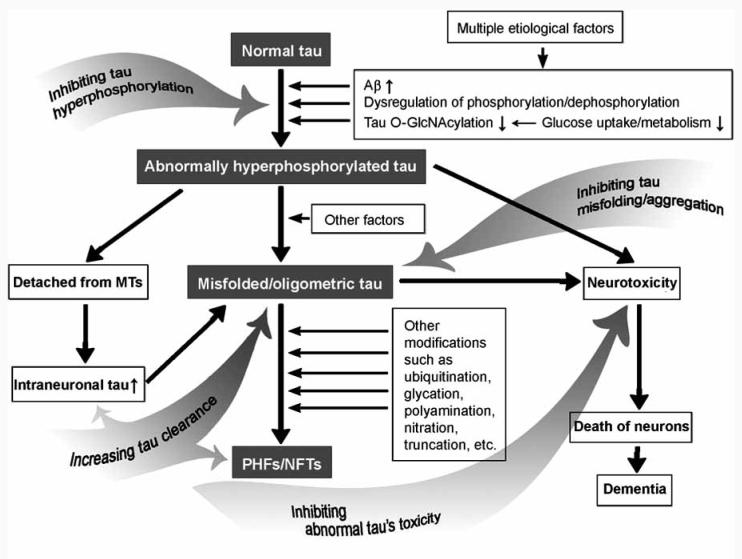Fig. (1).
Proposed mechanism of neurofibrillary degeneration and targets for therapeutic interventions. Multiple etiological factors cause abnormal hyperphosphorylation of tau via various pathways, including Aβ, dysregulation of phosphorylation/dephosphorylation, and impaired brain glucose metabolism. The abnormally hyperphosphorylated tau not only loses its biological activity and disassociates from microtubules (MTs), but also promotes its polymerization. The soluble abnormal tau and/or its oligomers are toxic to neurons and lead to neuronal death and dementia. Probably due to the defense mechanism of the neuron, abnormal tau further polymerizes into highly aggregated paired helical filaments (PHFs) and neurofibrillary tangles (NFTs) that might be inert but might finally choke the affected neurons and facilitate cell death. Thus, tau protein is obviously a promising target for developing disease-modifying therapy for AD. The gray arrows indicate several therapeutic strategies targeting neurofibrillary degeneration.

